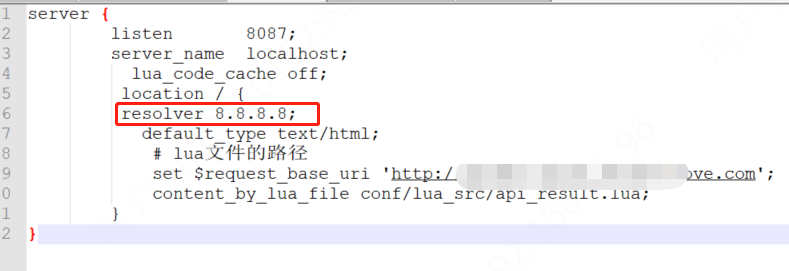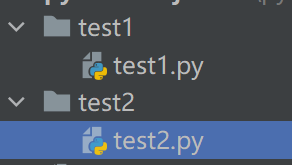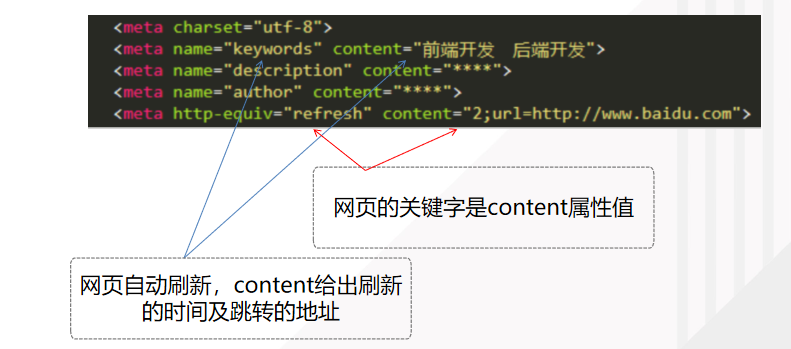UFLDL教程之(一)sparseae_exercise
下面,将UFLDL教程中的 sparseae_exercise练习中的各函数及注释列举如下
首先,给出各函数的调用关系
主函数:train.m
(1)调用sampleIMAGES函数从已知图像中扣取多个图像块儿
(2)调用display_network函数,以网格的形式,随机显示多个扣取的图像块儿
(3)梯度校验,该部分的目的是测试函数是否正确,可以由单独的函数checkSparseAutoencoderCost实现
①利用sparseAutoencoderCost函数计算网路的代价函数和梯度值②利用computeNumericalGradient函数计算梯度值(这里,要利用checkNumericalGradient函数验证该梯度计算函数是否正确)③比较①和②的梯度计算结果,判断编写的sparseAutoencoderCost函数是否正确如果sparseAutoencoderCost函数是正确的,那么,在实际训练中,不需要运行checkSparseAutoencoderCost
(4)利用L-BFGS方法对网络进行训练,从而得到最优化的网络的权值和偏执项
(5)对训练结果进行可视化
然后,对个函数给出注释
train.m
%% CS294A/CS294W Programming Assignment Starter Codeaddpath ..common\%%======================================================================%% STEP 0: Here we provide the relevant parameters values that will% allow your sparse autoencoder to get good filters; you do not need to change the parameters below.visibleSize = 8*8; % number of input unitshiddenSize = 25; % number of hidden unitssparsityParam = 0.01; % desired average activation of the hidden units.% (This was denoted by the Greek alphabet rho, which looks like a lower-case "p", in the lecture notes).lambda = 0.0001; % weight decay parameterbeta = 3; % weight of sparsity penalty term%%======================================================================%% STEP 1: Implement sampleIMAGES% After implementing sampleIMAGES, the display_network command should display a random sample of 200 patches from the dataset%从图像中提取图像块儿,每一个提取到的图像块儿存放在patches的每一列中patches = sampleIMAGES;%随机提取patches中的200列,然后显示这200列所对应的图像IMG=patches(:,randi(size(patches,2),200,1));display_network(IMG,8);%%======================================================================%% STEP 2 and STEP 3:Implement sparseAutoencoderCost and Gradient CheckingcheckSparseAutoencoderCost()%%======================================================================%% STEP 4: After verifying that your implementation of% Randomly initialize the parameterstheta = initializeParameters(hiddenSize, visibleSize);% Use minFunc to minimize the functionaddpath minFunc/options.Method = 'lbfgs'; % Here, we use L-BFGS to optimize our cost function% Generally, for minFunc to work, you need a function pointer with two outputs: the function value and the gradient.% In our problem, sparseAutoencoderCost.m satisfies this.options.maxIter = 400; % Maximum number of iterations of L-BFGS to runoptions.display = 'on';% opttheta是整个神经网络的权值和偏执项构成的向量[opttheta, cost] = minFunc( @(p) sparseAutoencoderCost(p, ...visibleSize, hiddenSize, ...lambda, sparsityParam, ...beta, patches), ...theta, options);%%======================================================================%% STEP 5: VisualizationW1 = reshape(opttheta(1:hiddenSize*visibleSize), hiddenSize, visibleSize);%第一层的权值矩阵display_network(W1', 12);print -djpeg weights.jpg % save the visualization to a file
checkSparseAutoencoderCost.m
%% 该函数主要目的是检验SparseAutoencoderCost函数是否正确function checkSparseAutoencoderCost()%% 产生一个稀疏自编码网络(可以与主程序相同,也可以重新产生)visibleSize = 8*8; % number of input unitshiddenSize = 25; % number of hidden unitssparsityParam = 0.01; % desired average activation of the hidden units.% (This was denoted by the Greek alphabet rho, which looks like a lower-case "p", in the lecture notes).lambda = 0.0001; % weight decay parameterbeta = 3; % weight of sparsity penalty termpatches = sampleIMAGES;% Obtain random parameters thetatheta = initializeParameters(hiddenSize, visibleSize);%% 计算代价函数和梯度[cost, grad] = sparseAutoencoderCost(theta, visibleSize, hiddenSize, lambda, ...sparsityParam, beta, patches(:,1:10));%% 利用近似方法计算梯度(要调用自编码器的代价函数计算程序)numgrad = computeNumericalGradient( @(x) sparseAutoencoderCost(x, visibleSize, ...hiddenSize, lambda, ...sparsityParam, beta, ...patches(:,1:10)), theta);%% 比较cost函数计算得到的梯度和由近似得到的梯度之% Use this to visually compare the gradients side by sidedisp([numgrad grad]);% Compare numerically computed gradients with the ones obtained from backpropagationdiff = norm(numgrad-grad)/norm(numgrad+grad);disp(diff); % Should be small. In our implementation, these values are usually less than 1e-9.end
sparseAutoencoderCost.m
%% 计算网络的代价函数和梯度function [cost,grad] = sparseAutoencoderCost(theta, visibleSize, hiddenSize, ...lambda, sparsityParam, beta, data)% visibleSize: the number of input units (probably 64)% hiddenSize: the number of hidden units (probably 25)% lambda: weight decay parameter% sparsityParam: The desired average activation for the hidden units (denoted in the lecture% notes by the greek alphabet rho, which looks like a lower-case "p").% beta: weight of sparsity penalty term% data: Our 64x10000 matrix containing the training data. So, data(:,i) is the i-th training example.% The input theta is a vector (because minFunc expects the parameters to be a vector).% We first convert theta to the (W1, W2, b1, b2) matrix/vector format, so that this% follows the notation convention of the lecture notes.W1 = reshape(theta(1:hiddenSize*visibleSize), hiddenSize, visibleSize);W2 = reshape(theta(hiddenSize*visibleSize+1:2*hiddenSize*visibleSize), visibleSize, hiddenSize);b1 = theta(2*hiddenSize*visibleSize+1:2*hiddenSize*visibleSize+hiddenSize);b2 = theta(2*hiddenSize*visibleSize+hiddenSize+1:end);% Cost and gradient variables (your code needs to compute these values).% Here, we initialize them to zeros.cost = 0;m=size(data,2);%% ---------- YOUR CODE HERE --------------------------------------% Instructions: Compute the cost/optimization objective J_sparse(W,b) for the Sparse Autoencoder,% and the corresponding gradients W1grad, W2grad, b1grad, b2grad.%% W1grad, W2grad, b1grad and b2grad should be computed using backpropagation.% Note that W1grad has the same dimensions as W1, b1grad has the same dimensions% as b1, etc. Your code should set W1grad to be the partial derivative of J_sparse(W,b) with% respect to W1. I.e., W1grad(i,j) should be the partial derivative of J_sparse(W,b)% with respect to the input parameter W1(i,j). Thus, W1grad should be equal to the term% [(1/m) \Delta W^{(1)} + \lambda W^{(1)}] in the last block of pseudo-code in Section 2.2% of the lecture notes (and similarly for W2grad, b1grad, b2grad).%% Stated differently, if we were using batch gradient descent to optimize the parameters,% the gradient descent update to W1 would be W1 := W1 - alpha * W1grad, and similarly for W2, b1, b2.%%% 前向传播算法a1=data;z2=bsxfun(@plus,W1*a1,b1);a2=sigmoid(z2);z3=bsxfun(@plus,W2*a2,b2);a3=sigmoid(z3);%% 计算网络误差% 误差项J1=所有样本代价函数均值y=data; % 网络的理想输出值Ei=sum((a3-y).^2)/2; %每一个样本的代价函数J1=sum(Ei)/m;% 正则化项J2=所有权值项平方和J2=sum(W1(:).^2)+sum(W2(:).^2);% 稀疏项J3=所有隐藏层的神经元相对熵之和rho_hat=sum(a2,2)/m;KL=sum(sparsityParam*log(sparsityParam./rho_hat)+...(1-sparsityParam)*log((1-sparsityParam)./(1-rho_hat)));J3=KL;% 网络的代价函数cost=J1+lambda*J2/2+beta*J3;%% 反向传播算法计算各层敏感度deltadelta3=-(data-a3).*dsigmoid(z3);spare_delta=beta*(-sparsityParam./rho_hat+(1-sparsityParam)./(1-rho_hat));delta2=bsxfun(@plus,W2'*delta3,spare_delta).*dsigmoid(z2); % 这里加入了稀疏项%% 计算代价函数对各层权值和偏执项的梯度W1grad=delta2*a1'/m+lambda*W1;W2grad=delta3*a2'/m+lambda*W2;b1grad=sum(delta2,2)/m;b2grad=sum(delta3,2)/m;%-------------------------------------------------------------------% After computing the cost and gradient, we will convert the gradients back% to a vector format (suitable for minFunc). Specifically, we will unroll% your gradient matrices into a vector.grad = [W1grad(:) ; W2grad(:) ; b1grad(:) ; b2grad(:)];%end%-------------------------------------------------------------------% Here's an implementation of the sigmoid function, which you may find useful% in your computation of the costs and the gradients. This inputs a (row or% column) vector (say (z1, z2, z3)) and returns (f(z1), f(z2), f(z3)).function sigm = sigmoid(x)sigm = 1 ./ (1 + exp(-x));end%% 求解sigmoid函数的导数(这里的计算公式一定要注意啊,出过错)function dsigm = dsigmoid(x)sigx = sigmoid(x);dsigm=sigx.*(1-sigx);end
梯度检验函数见另一篇博文



































还没有评论,来说两句吧...